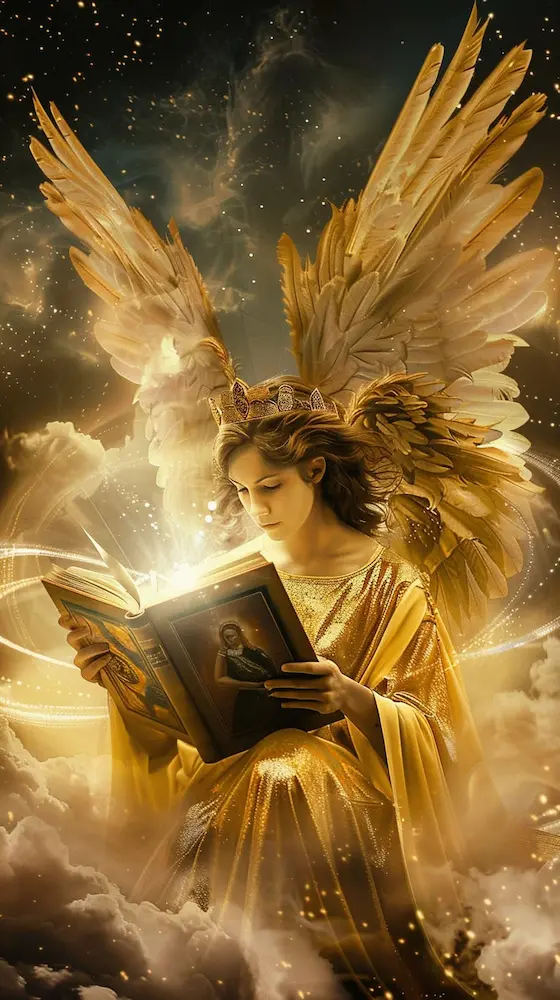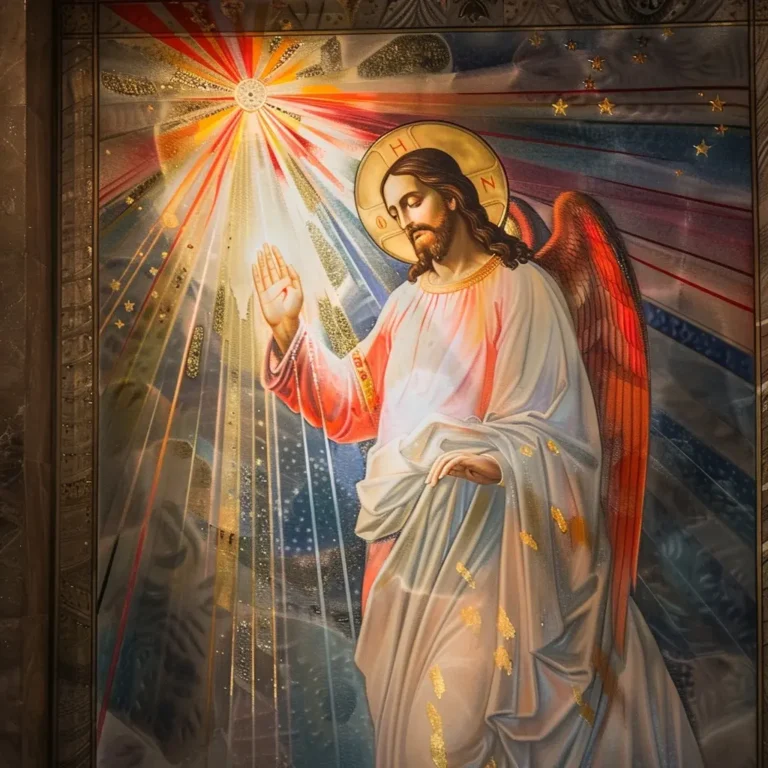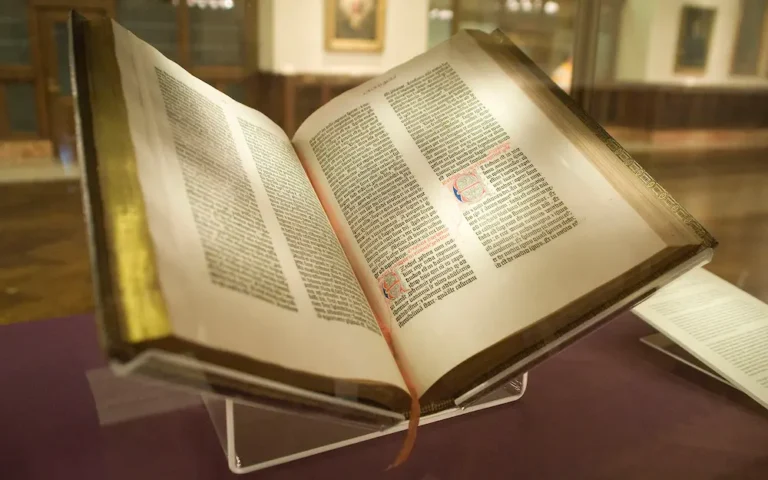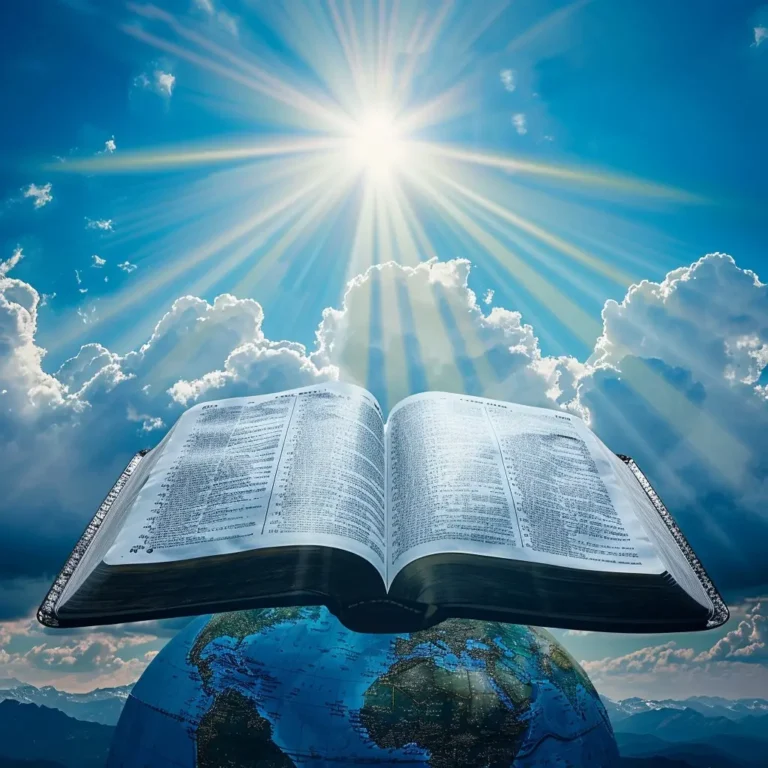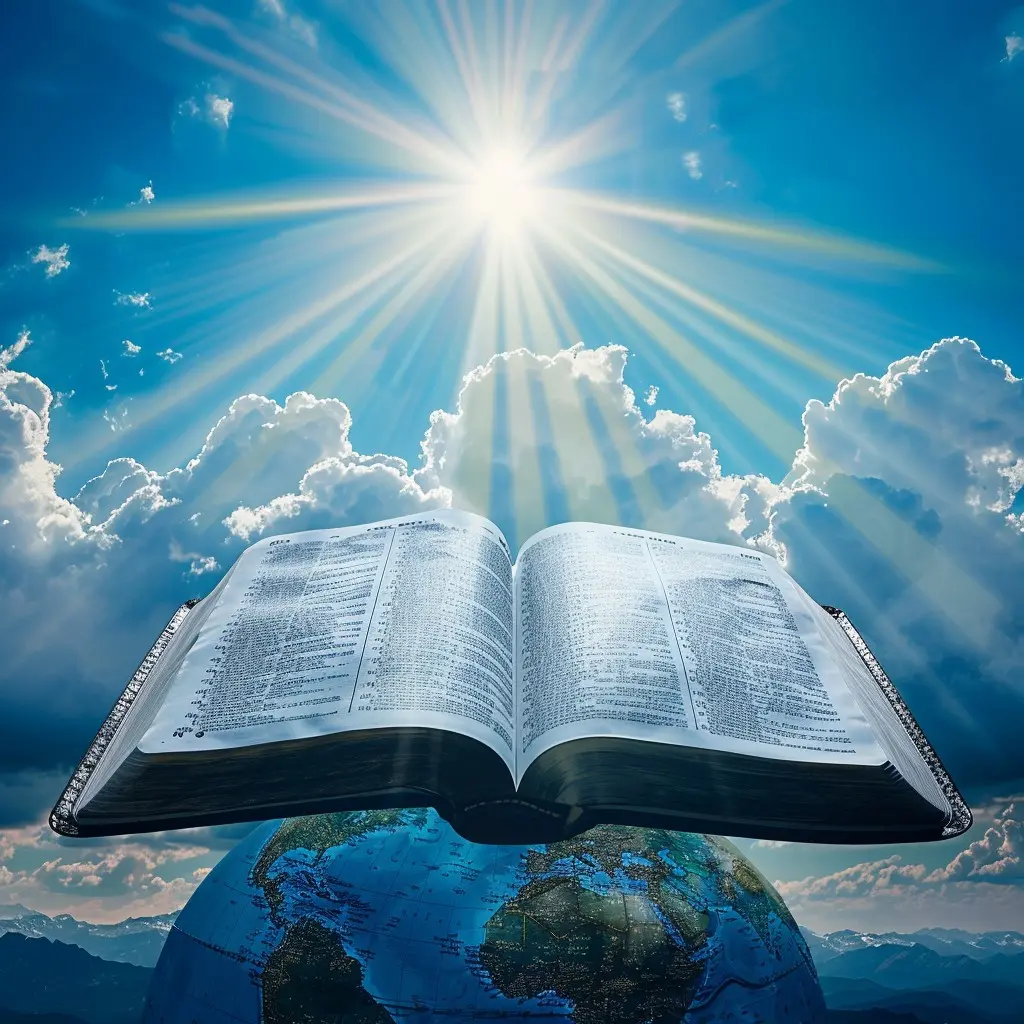
Bible questions and answers that will test your deep knowledge of the Old Testament! Delve into the intricate stories, laws, and prophecies from the first four books of the Bible.
This challenging quiz features some of the most obscure and demanding questions, designed to push the boundaries of your biblical expertise.
1. In Genesis, what was the specific role of the “nephilim” mentioned before the flood?
View Answer
Answer: They were the offspring of the “sons of God” and the “daughters of men.”
[Genesis 6.4]
Genesis 6:4 refers to the nephilim as giants or mighty men of old, seen as heroes but associated with corruption on earth.2. Which city did Abraham’s servant travel to find a wife for Isaac, and what was the name of the well where he met Rebekah?
View Answer
Answer: The city was Nahor, and the well was located outside the city.
[Genesis 24.10]
Genesis 24:10 mentions Abraham’s servant going to Nahor, and Genesis 24:11 describes him meeting Rebekah at the well.3. What were the names of the two cities that Lot and his family fled to after the destruction of Sodom and Gomorrah?
View Answer
Answer: Zoar and the mountains.
[Genesis 19.30]
Genesis 19:30 details that Lot fled to Zoar, and later he and his daughters lived in the mountains.4. What unusual sign did God give Jacob to confirm his covenant at Bethel?
View Answer
Answer: A ladder reaching to heaven with angels ascending and descending on it.
[Genesis 28.12]
Genesis 28:12 describes Jacob’s dream of a ladder reaching to heaven, symbolizing God’s covenant with him.5. In Exodus, what was the name of the Egyptian sorcerer who opposed Moses along with the magicians?
View Answer
Answer: Janes and Jambres
[2 Timothy 3.8]
Though not explicitly named in Exodus, Janes and Jambres are identified in 2 Timothy 3:8 as opposing Moses.6. How did the Israelites defeat the Amalekites at Rephidim?
View Answer
Answer: By Moses holding up his hands while Joshua led the battle.
[Exodus 17.11-13]
Exodus 17:11-13 describes how the Israelites’ victory over the Amalekites was tied to Moses holding up his staff.7. What were the dimensions of the tabernacle’s holy place and the Most Holy Place?
View Answer
Answer: The holy place was 20 cubits long, 10 cubits wide, and 10 cubits high; the Most Holy Place was 10 cubits cubed.
[Exodus 26.16-33]
Exodus 26:16-33 provides the detailed dimensions for both sections of the tabernacle.8. What specific sin offerings were required for someone who committed an unintentional sin?
View Answer
Answer: A young bull for the high priest, a male goat for the congregation, and a female goat or lamb for an individual.
[Leviticus 4.3-35]
Leviticus 4:3-35 details the specific offerings depending on the sinner’s role and status.9. What were the unique characteristics of the altar of burnt offering described in Leviticus?
View Answer
Answer: It was made of bronze, had horns on its corners, and was placed in the courtyard of the tabernacle.
[Exodus 27.1-8]
Exodus 27:1-8 describes the altar’s design, including its bronze construction and horns.10. In Numbers, what was the name of the prophetess who opposed Moses’ marriage to a Cushite woman?
View Answer
Answer: Miriam
[Numbers 12.1]
Numbers 12:1 recounts Miriam’s opposition to Moses’ marriage to a Cushite woman and her subsequent punishment.11. What were the names of the two men who were selected to assist Moses in bearing the burden of leadership, and what was their role?
View Answer
Answer: Eldad and Medad; they prophesied in the camp.
[Numbers 11.26-29]
Numbers 11:26-29 describes how Eldad and Medad prophesied in the camp, causing some to question their role.12. What specific command did God give concerning the Passover lamb in Exodus?
View Answer
Answer: It must be a year-old male lamb without defect, and its blood was to be used to mark the doorframes of their houses.
[Exodus 12.5-7]
Exodus 12:5-7 details the requirements for the Passover lamb and its use in protecting the Israelites during the plague.13. What unusual circumstance surrounded the birth of Joseph’s two sons, Ephraim and Manasseh, according to Genesis?
View Answer
Answer: Their birth was marked by Jacob placing his right hand on Ephraim’s head, despite Ephraim being the younger.
[Genesis 48.13-14]
Genesis 48:13-14 describes Jacob crossing his hands to bless Ephraim, the younger, over Manasseh, the older.14. In Leviticus, what is the process for the ritual of the red heifer, and what is its purpose?
View Answer
Answer: The red heifer is to be burned completely, and its ashes used in purifying those who have come into contact with a dead body.
[Numbers 19.2-10]
Numbers 19:2-10 outlines the red heifer ritual and its role in purification rites.15. How did God respond when Aaron and Miriam spoke against Moses?
View Answer
Answer: God summoned them to the tabernacle and Miriam was struck with leprosy for seven days.
[Numbers 12.4-10]
Numbers 12:4-10 describes God’s judgment on Miriam and Aaron for their criticism of Moses.16. What was the specific command given to the Israelites regarding the Sabbath year in Leviticus?
View Answer
Answer: Every seventh year was to be a Sabbath year when the land was to rest and lie fallow.
[Leviticus 25.4]
Leviticus 25:4 outlines the requirement for the land to rest every seventh year, known as the Sabbath year.17. How did God demonstrate His power during the confrontation with the Egyptian magicians in Exodus?
View Answer
Answer: By turning Aaron’s staff into a serpent, which swallowed the magicians’ serpents.
[Exodus 7.10-12]
Exodus 7:10-12 describes how Aaron’s staff became a serpent and devoured the magicians’ serpents, showing God’s power over them.18. What significant event occurred when Moses descended from Mount Sinai the second time with the new tablets?
View Answer
Answer: His face shone so brightly that the Israelites were afraid to come near him.
[Exodus 34.29-30]
Exodus 34:29-30 describes Moses’ radiant face after meeting with God on the mountain.19. What was the name of the mountain where Moses was given the Ten Commandments, and what was its significance?
View Answer
Answer: Mount Sinai; it was the location where God gave Moses the law and established the covenant with Israel.
[Exodus 19.20]
Exodus 19:20 details that Mount Sinai was the site of the giving of the law and the establishment of the covenant.20. In Numbers, what was the purpose of the silver trumpets made for the Israelites?
View Answer
Answer: To signal the Israelites for assembly, to direct the movement of the camp, and for war.
[Numbers 10.1-10]
Numbers 10:1-10 describes how the silver trumpets were used for various purposes, including signaling and assembly.21. How did the Israelites react to the spies’ report of the land of Canaan, and what was the consequence of their reaction?
View Answer
Answer: They grumbled and wished to return to Egypt; as a consequence, they were condemned to wander in the desert for forty years.
[Numbers 14.1-34]
Numbers 14:1-34 describes the Israelites’ negative reaction and the resulting punishment.22. What specific command did God give concerning the treatment of a foreigner residing among the Israelites in Exodus?
View Answer
Answer: The foreigner was to be treated as a native-born and given the same laws and rights as the Israelites.
[Exodus 22.21]
Exodus 22:21 instructs that foreigners among the Israelites should be treated fairly and given equal rights.23. What was the name of the prophetess who opposed Moses’ marriage to a Cushite woman?
View Answer
Answer: Miriam
[Numbers 12.1]
Numbers 12:1 recounts Miriam’s opposition to Moses’ marriage to a Cushite woman and her subsequent punishment.24. What unusual circumstance surrounded the birth of Joseph’s two sons, Ephraim and Manasseh, according to Genesis?
View Answer
Answer: Their birth was marked by Jacob placing his right hand on Ephraim’s head, despite Ephraim being the younger.
[Genesis 48.13-14]
Genesis 48:13-14 describes Jacob crossing his hands to bless Ephraim, the younger, over Manasseh, the older.25. What were the requirements for the offerings given on the Day of Atonement, as outlined in Leviticus?
View Answer
Answer: The high priest was to offer a bull for himself and his household, and two goats for the people, one for the Lord and one as a scapegoat.
[Leviticus 16.5-10]
Leviticus 16:5-10 describes the offerings required for the Day of Atonement and their purposes.26. What were the unique characteristics of the bronze serpent made by Moses in the wilderness?
View Answer
Answer: It was a bronze serpent set on a pole, and those who looked at it were healed from snake bites.
[Numbers 21.8-9]
Numbers 21:8-9 describes the creation and purpose of the bronze serpent for healing the Israelites.27. How did Jacob use a unique method to ensure his flocks produced strong offspring according to Genesis?
View Answer
Answer: Jacob placed peeled sticks in front of the watering troughs, believing it would influence the appearance of the offspring.
[Genesis 30.37-39]
Genesis 30:37-39 details how Jacob used this method to influence the breeding of his flocks.28. What was the name of the city where Joshua and the Israelites renewed their covenant with God?
View Answer
Answer: Shechem
[Joshua 24.1]
Joshua 24:1 recounts the renewal of the covenant at Shechem.29. What was the purpose of the “cities of refuge” established in Numbers?
View Answer
Answer: To provide a safe place for individuals who accidentally committed manslaughter to escape the avenger of blood.
[Numbers 35.9-15]
Numbers 35:9-15 explains the establishment of cities of refuge for those who committed unintentional murder.30. What was the unusual way that Balaam’s donkey communicated with him in Numbers?
View Answer
Answer: The donkey spoke to Balaam after being beaten for not moving, revealing God’s message to him.
[Numbers 22.28]
Numbers 22:28 recounts how Balaam’s donkey spoke and rebuked him, a unique instance in the Bible.31. What specific sin offerings were required for someone who committed an unintentional sin according to Leviticus?
View Answer
Answer: A young bull for the high priest, a male goat for the congregation, and a female goat or lamb for an individual.
[Leviticus 4.3-35]
Leviticus 4:3-35 details the specific offerings depending on the sinner’s role and status.32. What was the name of the mountain where Moses was given the Ten Commandments, and what was its significance?
View Answer
Answer: Mount Sinai; it was the location where God gave Moses the law and established the covenant with Israel.
[Exodus 19.20]
Exodus 19:20 details that Mount Sinai was the site of the giving of the law and the establishment of the covenant.33. What was the significance of the covenant of peace given to Phinehas in Numbers?
View Answer
Answer: It was a covenant of a perpetual priesthood due to his zealous action in stopping the idolatry among the Israelites.
[Numbers 25.12-13]
Numbers 25:12-13 describes the covenant of peace given to Phinehas for his role in stopping the rebellion and idolatry.34. How did the Israelites react when they saw the giants in the land of Canaan?
View Answer
Answer: They were afraid and felt like grasshoppers compared to the giants.
[Numbers 13.33]
Numbers 13:33 describes the Israelites’ fear upon seeing the giants in Canaan.35. How did God respond when the Israelites complained about the lack of meat in the wilderness?
View Answer
Answer: God provided *- check this in the bible, we don’t have the answer for now!
35. What was the consequence of the Israelites’ complaint about the manna in the desert?
View Answer
Answer: God sent quail in abundance, and also sent a plague as a punishment for their greed.
[Numbers 11.31-34]
Numbers 11:31-34 recounts how God sent quail and a subsequent plague in response to the Israelites’ complaints.
36. What was the unique feature of the burnt offerings described in Leviticus?
View Answer
Answer: The entire animal was consumed by fire, symbolizing the total dedication to God.
[Leviticus 1.9]
Leviticus 1:9 describes how the burnt offerings were completely consumed by fire.
37. How many years did the Israelites wander in the desert due to their lack of faith?
View Answer
Answer: Forty years
[Numbers 14.33-34]
Numbers 14:33-34 details the forty years of wandering as a consequence of the Israelites’ lack of faith.
38. What was the purpose of the “counting of the people” that occurred in Numbers?
View Answer
Answer: To organize the people for military and administrative purposes, as well as to assess the size of the tribe.
[Numbers 1.1-4]
Numbers 1:1-4 describes the census and its purpose for organizing the Israelites.
39. What were the names of the two men who were selected to scout the land of Canaan?
View Answer
Answer: Caleb and Joshua
[Numbers 13.6, 16]
Numbers 13:6 and 13:16 list Caleb and Joshua among the twelve spies sent to scout Canaan.
40. In Leviticus, what was the specific regulation regarding the cleanliness of the priests?
View Answer
Answer: Priests had to avoid ritual impurity and maintain cleanliness to perform their duties, including avoiding contact with the dead.
[Leviticus 21.1-4]
Leviticus 21:1-4 describes the regulations for priests regarding ritual cleanliness and avoiding impurity.
41. What was the name of the daughter of Pharaoh who rescued and adopted Moses?
View Answer
Answer: Bithiah
[Exodus 2.10]
Exodus 2:10 identifies Bithiah as the daughter of Pharaoh who adopted Moses.
42. What was the purpose of the Levitical cities of refuge?
View Answer
Answer: They were designated for those who accidentally committed manslaughter to escape avengers and have a fair trial.
[Numbers 35.9-15]
Numbers 35:9-15 outlines the purpose and function of the cities of refuge.
43. What was the reaction of the Israelites when they first saw the Promised Land?
View Answer
Answer: They were initially frightened by the giants and fortified cities, leading to a lack of faith.
[Numbers 13.33]
Numbers 13:33 describes the fear and lack of faith among the Israelites upon seeing the giants in the land.
44. How did the high priest’s garments symbolize his role in the Israelite community?
View Answer
Answer: The garments included the ephod, breastplate, and mitre, which represented his role in mediating between God and the people.
[Exodus 28.2-39]
Exodus 28:2-39 details the significance and components of the high priest’s garments.
45. What was the name of the Levite who led a rebellion against Moses and Aaron?
View Answer
Answer: Korah
[Numbers 16.1]
Numbers 16:1 describes Korah’s rebellion against Moses and Aaron.
46. What unique method did Jacob use to manipulate the breeding of his flocks?
View Answer
Answer: He placed peeled rods in the watering troughs, believing this would affect the color of the offspring.
[Genesis 30.37-39]
Genesis 30:37-39 explains Jacob’s method to influence the appearance of his flocks’ offspring.
47. What was the name of the prophet who was killed by Jehu for his prophecies against the house of Ahab?
View Answer
Answer: Jehonadab
[2 Kings 10.15-16]
2 Kings 10:15-16 mentions Jehonadab, who was killed for his association with the prophets opposed by Jehu.
48. In Leviticus, what was the purpose of the Year of Jubilee?
View Answer
Answer: To restore property to original owners, free slaves, and declare a year of rest for the land every fiftieth year.
[Leviticus 25.10-13]
Leviticus 25:10-13 describes the Year of Jubilee and its implications for land ownership and personal freedom.
49. What was the unique feature of the manna provided to the Israelites in the desert?
View Answer
Answer: It was a fine, flake-like thing, as fine as frost on the ground, and could be gathered daily but spoiled if kept overnight.
[Exodus 16.14-21]
Exodus 16:14-21 describes the appearance and properties of manna provided by God in the wilderness.
50. How did the Israelites celebrate the completion of the tabernacle in the wilderness?
View Answer
Answer: They offered numerous sacrifices and the glory of the Lord filled the tabernacle.
[Exodus 40.33-34]
Exodus 40:33-34 recounts the completion of the tabernacle and God’s glory filling it.
51. What specific type of incense was burned in the tabernacle, and what was its significance?
View Answer
Answer: A special blend of spices that was considered holy and was burned on the altar of incense, symbolizing prayers ascending to God.
[Exodus 30.34-38]
Exodus 30:34-38 describes the incense recipe and its importance in the tabernacle worship.
52. What was the significance of the “ark of the covenant” and where was it kept in the tabernacle?
View Answer
Answer: The ark was the sacred container for the tablets of the covenant and was kept in the Most Holy Place.
[Exodus 25.10-22]
Exodus 25:10-22 details the construction and placement of the ark of the covenant in the tabernacle.
53. How did God protect the Israelites from the plagues in Egypt, especially the death of the firstborn?
View Answer
Answer: By instructing them to mark
53. How did God protect the Israelites from the plagues in Egypt, especially the death of the firstborn?
View Answer
Answer: By instructing them to mark their doorposts with the blood of a lamb, which would cause the Lord to pass over their houses and spare their firstborn.
[Exodus 12.12-13]
Exodus 12:12-13 describes the Passover and the protection offered to the Israelites through the lamb’s blood.
54. What was the purpose of the leprosy laws in Leviticus?
View Answer
Answer: To provide guidelines for diagnosing, isolating, and managing leprosy to prevent the spread of disease and ensure ritual purity.
[Leviticus 13.1-46]
Leviticus 13:1-46 outlines the leprosy laws and their role in maintaining health and ritual purity.
55. What was the role of the Levites among the Israelites?
View Answer
Answer: They were set apart for religious duties, including the care of the tabernacle, teaching, and assisting the priests.
[Numbers 3.6-10]
Numbers 3:6-10 explains the Levites’ role in religious and community life.
56. What did the twelve stones represent when Joshua set them up in the Jordan River?
View Answer
Answer: They represented the twelve tribes of Israel and served as a memorial of their crossing into the Promised Land.
[Joshua 4.1-9]
Joshua 4:1-9 describes the setting up of the twelve stones as a reminder of God’s faithfulness and the crossing of the Jordan River.
57. What was the purpose of the “Day of Atonement” as outlined in Leviticus?
View Answer
Answer: To atone for the sins of the people and cleanse the tabernacle from the impurities of the Israelites.
[Leviticus 16.29-30]
Leviticus 16:29-30 details the purpose of the Day of Atonement for sin and purification.
58. What did Jacob use to deceive his father Isaac into giving him the blessing meant for Esau?
View Answer
Answer: Jacob used goat skins on his hands and neck and wore Esau’s clothes to mimic his brother’s hairy appearance and scent.
[Genesis 27.15-16]
Genesis 27:15-16 details how Jacob used goat skins and Esau’s clothing to deceive Isaac.
58. What did Jacob use to deceive his father Isaac into giving him the blessing meant for Esau?
View Answer
Answer: Jacob used goat skins on his hands and neck and wore Esau’s clothes to mimic his brother’s hairy appearance and scent.
[Genesis 27.15-16]
Genesis 27:15-16 details how Jacob used goat skins and Esau’s clothing to deceive Isaac.
59. What was the name of the river that the Israelites crossed to enter the Promised Land?
View Answer
Answer: The Jordan River
[Joshua 3.16]
Joshua 3:16 describes the miraculous crossing of the Jordan River as the Israelites entered the Promised Land.
60. How did God respond to the request of the Israelites for a king?
View Answer
Answer: God initially expressed displeasure but allowed them to have a king, instructing Samuel to anoint Saul as the first king of Israel.
[1 Samuel 8.7-9]
1 Samuel 8:7-9 outlines God’s response to the Israelites’ request for a king and the anointing of Saul.
61. What did Solomon ask for from God when he became king?
View Answer
Answer: Solomon asked for wisdom to govern the people of Israel effectively.
[1 Kings 3.5-9]
1 Kings 3:5-9 describes Solomon’s request for wisdom and God’s response granting it, along with wealth and honor.
62. What was the purpose of the “tithes” in the Israelite law?
View Answer
Answer: Tithes were a portion of one’s income or produce given to support the Levites, priests, and the work of the temple.
[Numbers 18.21-26]
Numbers 18:21-26 explains the role of tithes in supporting the Levites and the work of the temple.
63. What was the significance of the “veil” in the tabernacle and temple?
View Answer
Answer: The veil separated the Most Holy Place from the Holy Place, symbolizing the separation between God and man.
[Exodus 26.31-33]
Exodus 26:31-33 describes the veil and its role in separating the Most Holy Place from the rest of the tabernacle.
64. Who was the prophet who challenged the prophets of Baal on Mount Carmel?
View Answer
Answer: Elijah
[1 Kings 18.20-40]
1 Kings 18:20-40 describes Elijah’s challenge to the prophets of Baal and the resulting demonstration of God’s power.
65. What was the name of the sea that the Israelites crossed during the Exodus?
View Answer
Answer: The Red Sea
[Exodus 14.21-22]
Exodus 14:21-22 describes the crossing of the Red Sea and the miraculous parting of the waters.
66. What was the central theme of the book of Proverbs?
View Answer
Answer: The central theme is wisdom and the importance of living a life according to God’s principles and guidance.
[Proverbs 1.7]
Proverbs 1:7 states that the fear of the Lord is the beginning of knowledge, highlighting the theme of wisdom throughout the book.
67. How did God communicate with Moses on Mount Sinai?
View Answer
Answer: God communicated with Moses through a burning bush and directly on the mountain with thunder, lightning, and the giving of the Ten Commandments.
[Exodus 3.2-4, Exodus 19.16]
Exodus 3:2-4 describes the burning bush, and Exodus 19:16 describes the dramatic manifestations on Mount Sinai.
68. What was the role of the “kings of Israel” in the Old Testament?
View Answer
Answer: The kings were to lead the nation, govern according to God’s laws, and ensure the spiritual and social well-being of the people.
[Deuteronomy 17.14-20]
Deuteronomy 17:14-20 outlines the responsibilities and regulations for kings in Israel.
69. What was the purpose of the “sabbatical year” in Israelite law?
View Answer
Answer: The sabbatical year was a time for the land to rest, debts to be forgiven, and slaves to be freed, occurring every seventh year.
[Leviticus 25.1-7]
Leviticus 25:1-7 describes the sabbatical year and its purpose for rest and renewal.
70. What was the role of the “high priest” in the Old Testament?
View Answer
Answer: The high priest served as the chief religious leader, making atonement for the people, overseeing the tabernacle or temple services, and representing the people before God.
[Leviticus 16.32-34]
Leviticus 16:32-34 describes the high priest’s role in making atonement for the people and performing sacred duties.
Reference
- Christian Bible Reference Site
Bible Quizzes – Christian Bible Reference Site
This site offers free, automatically scored quizzes on various Bible topics to test your knowledge.
- Bible IQ
Bible Trivia “300 Series” | Bible IQ
Bible IQ provides a series of trivia questions with references to enhance learning about the Bible.
- Bible Study Tools
50 Bible Trivia Questions and Answers – Bible Study Tips
This resource offers a collection of Bible trivia questions sorted into categories for testing knowledge.
- Scribd
Bible Quiz With Answers and References – Scribd
A document containing multiple-choice Bible trivia questions covering various topics, available for download.
- King James Bible Online
Bible Trivia Questions – King James Bible
This site features thousands of Bible trivia questions sorted by difficulty and category to challenge users.
- Bible Gateway
Bible Trivia – Bible Gateway
Bible Gateway offers quizzes and trivia questions to test your knowledge of the Scriptures.
- Christianity.com
Bible Trivia Questions and Answers
This resource provides a variety of Bible trivia questions along with their answers for learning and fun.
- Crosswalk
100 Bible Trivia Questions & Answers
Crosswalk offers a comprehensive set of Bible trivia questions and answers for individuals and groups.
- Fun Trivia
Bible Trivia Quizzes – Fun Trivia
Fun Trivia hosts a collection of Bible quizzes that challenge users on various aspects of the Scriptures.
- Bible.org
Bible Trivia Questions
Bible.org provides trivia questions designed to test knowledge of the Bible, suitable for both individuals and groups.
View Answer
Answer: God sent quail in abundance, and also sent a plague as a punishment for their greed.
[Numbers 11.31-34]
Numbers 11:31-34 recounts how God sent quail and a subsequent plague in response to the Israelites’ complaints.View Answer
Answer: The entire animal was consumed by fire, symbolizing the total dedication to God.
[Leviticus 1.9]
Leviticus 1:9 describes how the burnt offerings were completely consumed by fire.View Answer
Answer: Forty years
[Numbers 14.33-34]
Numbers 14:33-34 details the forty years of wandering as a consequence of the Israelites’ lack of faith.View Answer
Answer: To organize the people for military and administrative purposes, as well as to assess the size of the tribe.
[Numbers 1.1-4]
Numbers 1:1-4 describes the census and its purpose for organizing the Israelites.View Answer
Answer: Caleb and Joshua
[Numbers 13.6, 16]
Numbers 13:6 and 13:16 list Caleb and Joshua among the twelve spies sent to scout Canaan.View Answer
Answer: Priests had to avoid ritual impurity and maintain cleanliness to perform their duties, including avoiding contact with the dead.
[Leviticus 21.1-4]
Leviticus 21:1-4 describes the regulations for priests regarding ritual cleanliness and avoiding impurity.View Answer
Answer: Bithiah
[Exodus 2.10]
Exodus 2:10 identifies Bithiah as the daughter of Pharaoh who adopted Moses.View Answer
Answer: They were designated for those who accidentally committed manslaughter to escape avengers and have a fair trial.
[Numbers 35.9-15]
Numbers 35:9-15 outlines the purpose and function of the cities of refuge.View Answer
Answer: They were initially frightened by the giants and fortified cities, leading to a lack of faith.
[Numbers 13.33]
Numbers 13:33 describes the fear and lack of faith among the Israelites upon seeing the giants in the land.View Answer
Answer: The garments included the ephod, breastplate, and mitre, which represented his role in mediating between God and the people.
[Exodus 28.2-39]
Exodus 28:2-39 details the significance and components of the high priest’s garments.View Answer
Answer: Korah
[Numbers 16.1]
Numbers 16:1 describes Korah’s rebellion against Moses and Aaron.View Answer
Answer: He placed peeled rods in the watering troughs, believing this would affect the color of the offspring.
[Genesis 30.37-39]
Genesis 30:37-39 explains Jacob’s method to influence the appearance of his flocks’ offspring.View Answer
Answer: Jehonadab
[2 Kings 10.15-16]
2 Kings 10:15-16 mentions Jehonadab, who was killed for his association with the prophets opposed by Jehu.View Answer
Answer: To restore property to original owners, free slaves, and declare a year of rest for the land every fiftieth year.
[Leviticus 25.10-13]
Leviticus 25:10-13 describes the Year of Jubilee and its implications for land ownership and personal freedom.View Answer
Answer: It was a fine, flake-like thing, as fine as frost on the ground, and could be gathered daily but spoiled if kept overnight.
[Exodus 16.14-21]
Exodus 16:14-21 describes the appearance and properties of manna provided by God in the wilderness.View Answer
Answer: They offered numerous sacrifices and the glory of the Lord filled the tabernacle.
[Exodus 40.33-34]
Exodus 40:33-34 recounts the completion of the tabernacle and God’s glory filling it.View Answer
Answer: A special blend of spices that was considered holy and was burned on the altar of incense, symbolizing prayers ascending to God.
[Exodus 30.34-38]
Exodus 30:34-38 describes the incense recipe and its importance in the tabernacle worship.View Answer
Answer: The ark was the sacred container for the tablets of the covenant and was kept in the Most Holy Place.
[Exodus 25.10-22]
Exodus 25:10-22 details the construction and placement of the ark of the covenant in the tabernacle.View Answer
Answer: By instructing them to mark
53. How did God protect the Israelites from the plagues in Egypt, especially the death of the firstborn?
View Answer
Answer: By instructing them to mark their doorposts with the blood of a lamb, which would cause the Lord to pass over their houses and spare their firstborn.
[Exodus 12.12-13]
Exodus 12:12-13 describes the Passover and the protection offered to the Israelites through the lamb’s blood.
54. What was the purpose of the leprosy laws in Leviticus?
View Answer
Answer: To provide guidelines for diagnosing, isolating, and managing leprosy to prevent the spread of disease and ensure ritual purity.
[Leviticus 13.1-46]
Leviticus 13:1-46 outlines the leprosy laws and their role in maintaining health and ritual purity.
55. What was the role of the Levites among the Israelites?
View Answer
Answer: They were set apart for religious duties, including the care of the tabernacle, teaching, and assisting the priests.
[Numbers 3.6-10]
Numbers 3:6-10 explains the Levites’ role in religious and community life.
56. What did the twelve stones represent when Joshua set them up in the Jordan River?
View Answer
Answer: They represented the twelve tribes of Israel and served as a memorial of their crossing into the Promised Land.
[Joshua 4.1-9]
Joshua 4:1-9 describes the setting up of the twelve stones as a reminder of God’s faithfulness and the crossing of the Jordan River.
57. What was the purpose of the “Day of Atonement” as outlined in Leviticus?
View Answer
Answer: To atone for the sins of the people and cleanse the tabernacle from the impurities of the Israelites.
[Leviticus 16.29-30]
Leviticus 16:29-30 details the purpose of the Day of Atonement for sin and purification.
58. What did Jacob use to deceive his father Isaac into giving him the blessing meant for Esau?
View Answer
Answer: Jacob used goat skins on his hands and neck and wore Esau’s clothes to mimic his brother’s hairy appearance and scent.
[Genesis 27.15-16]
Genesis 27:15-16 details how Jacob used goat skins and Esau’s clothing to deceive Isaac.
58. What did Jacob use to deceive his father Isaac into giving him the blessing meant for Esau?
View Answer
Answer: Jacob used goat skins on his hands and neck and wore Esau’s clothes to mimic his brother’s hairy appearance and scent.
[Genesis 27.15-16]
Genesis 27:15-16 details how Jacob used goat skins and Esau’s clothing to deceive Isaac.
59. What was the name of the river that the Israelites crossed to enter the Promised Land?
View Answer
Answer: The Jordan River
[Joshua 3.16]
Joshua 3:16 describes the miraculous crossing of the Jordan River as the Israelites entered the Promised Land.
60. How did God respond to the request of the Israelites for a king?
View Answer
Answer: God initially expressed displeasure but allowed them to have a king, instructing Samuel to anoint Saul as the first king of Israel.
[1 Samuel 8.7-9]
1 Samuel 8:7-9 outlines God’s response to the Israelites’ request for a king and the anointing of Saul.
61. What did Solomon ask for from God when he became king?
View Answer
Answer: Solomon asked for wisdom to govern the people of Israel effectively.
[1 Kings 3.5-9]
1 Kings 3:5-9 describes Solomon’s request for wisdom and God’s response granting it, along with wealth and honor.
62. What was the purpose of the “tithes” in the Israelite law?
View Answer
Answer: Tithes were a portion of one’s income or produce given to support the Levites, priests, and the work of the temple.
[Numbers 18.21-26]
Numbers 18:21-26 explains the role of tithes in supporting the Levites and the work of the temple.
63. What was the significance of the “veil” in the tabernacle and temple?
View Answer
Answer: The veil separated the Most Holy Place from the Holy Place, symbolizing the separation between God and man.
[Exodus 26.31-33]
Exodus 26:31-33 describes the veil and its role in separating the Most Holy Place from the rest of the tabernacle.
64. Who was the prophet who challenged the prophets of Baal on Mount Carmel?
View Answer
Answer: Elijah
[1 Kings 18.20-40]
1 Kings 18:20-40 describes Elijah’s challenge to the prophets of Baal and the resulting demonstration of God’s power.
65. What was the name of the sea that the Israelites crossed during the Exodus?
View Answer
Answer: The Red Sea
[Exodus 14.21-22]
Exodus 14:21-22 describes the crossing of the Red Sea and the miraculous parting of the waters.
66. What was the central theme of the book of Proverbs?
View Answer
Answer: The central theme is wisdom and the importance of living a life according to God’s principles and guidance.
[Proverbs 1.7]
Proverbs 1:7 states that the fear of the Lord is the beginning of knowledge, highlighting the theme of wisdom throughout the book.
67. How did God communicate with Moses on Mount Sinai?
View Answer
Answer: God communicated with Moses through a burning bush and directly on the mountain with thunder, lightning, and the giving of the Ten Commandments.
[Exodus 3.2-4, Exodus 19.16]
Exodus 3:2-4 describes the burning bush, and Exodus 19:16 describes the dramatic manifestations on Mount Sinai.
68. What was the role of the “kings of Israel” in the Old Testament?
View Answer
Answer: The kings were to lead the nation, govern according to God’s laws, and ensure the spiritual and social well-being of the people.
[Deuteronomy 17.14-20]
Deuteronomy 17:14-20 outlines the responsibilities and regulations for kings in Israel.
69. What was the purpose of the “sabbatical year” in Israelite law?
View Answer
Answer: The sabbatical year was a time for the land to rest, debts to be forgiven, and slaves to be freed, occurring every seventh year.
[Leviticus 25.1-7]
Leviticus 25:1-7 describes the sabbatical year and its purpose for rest and renewal.
70. What was the role of the “high priest” in the Old Testament?
View Answer
Answer: The high priest served as the chief religious leader, making atonement for the people, overseeing the tabernacle or temple services, and representing the people before God.
[Leviticus 16.32-34]
Leviticus 16:32-34 describes the high priest’s role in making atonement for the people and performing sacred duties.
Reference
- Christian Bible Reference Site
Bible Quizzes – Christian Bible Reference Site
This site offers free, automatically scored quizzes on various Bible topics to test your knowledge.
- Bible IQ
Bible Trivia “300 Series” | Bible IQ
Bible IQ provides a series of trivia questions with references to enhance learning about the Bible.
- Bible Study Tools
50 Bible Trivia Questions and Answers – Bible Study Tips
This resource offers a collection of Bible trivia questions sorted into categories for testing knowledge.
- Scribd
Bible Quiz With Answers and References – Scribd
A document containing multiple-choice Bible trivia questions covering various topics, available for download.
- King James Bible Online
Bible Trivia Questions – King James Bible
This site features thousands of Bible trivia questions sorted by difficulty and category to challenge users.
- Bible Gateway
Bible Trivia – Bible Gateway
Bible Gateway offers quizzes and trivia questions to test your knowledge of the Scriptures.
- Christianity.com
Bible Trivia Questions and Answers
This resource provides a variety of Bible trivia questions along with their answers for learning and fun.
- Crosswalk
100 Bible Trivia Questions & Answers
Crosswalk offers a comprehensive set of Bible trivia questions and answers for individuals and groups.
- Fun Trivia
Bible Trivia Quizzes – Fun Trivia
Fun Trivia hosts a collection of Bible quizzes that challenge users on various aspects of the Scriptures.
- Bible.org
Bible Trivia Questions
Bible.org provides trivia questions designed to test knowledge of the Bible, suitable for both individuals and groups.
View Answer
Answer: By instructing them to mark their doorposts with the blood of a lamb, which would cause the Lord to pass over their houses and spare their firstborn.
[Exodus 12.12-13]
Exodus 12:12-13 describes the Passover and the protection offered to the Israelites through the lamb’s blood.View Answer
Answer: To provide guidelines for diagnosing, isolating, and managing leprosy to prevent the spread of disease and ensure ritual purity.
[Leviticus 13.1-46]
Leviticus 13:1-46 outlines the leprosy laws and their role in maintaining health and ritual purity.View Answer
Answer: They were set apart for religious duties, including the care of the tabernacle, teaching, and assisting the priests.
[Numbers 3.6-10]
Numbers 3:6-10 explains the Levites’ role in religious and community life.View Answer
Answer: They represented the twelve tribes of Israel and served as a memorial of their crossing into the Promised Land.
[Joshua 4.1-9]
Joshua 4:1-9 describes the setting up of the twelve stones as a reminder of God’s faithfulness and the crossing of the Jordan River.View Answer
Answer: To atone for the sins of the people and cleanse the tabernacle from the impurities of the Israelites.
[Leviticus 16.29-30]
Leviticus 16:29-30 details the purpose of the Day of Atonement for sin and purification.View Answer
Answer: Jacob used goat skins on his hands and neck and wore Esau’s clothes to mimic his brother’s hairy appearance and scent.
[Genesis 27.15-16]
Genesis 27:15-16 details how Jacob used goat skins and Esau’s clothing to deceive Isaac.View Answer
Answer: Jacob used goat skins on his hands and neck and wore Esau’s clothes to mimic his brother’s hairy appearance and scent.
[Genesis 27.15-16]
Genesis 27:15-16 details how Jacob used goat skins and Esau’s clothing to deceive Isaac.View Answer
Answer: The Jordan River
[Joshua 3.16]
Joshua 3:16 describes the miraculous crossing of the Jordan River as the Israelites entered the Promised Land.View Answer
Answer: God initially expressed displeasure but allowed them to have a king, instructing Samuel to anoint Saul as the first king of Israel.
[1 Samuel 8.7-9]
1 Samuel 8:7-9 outlines God’s response to the Israelites’ request for a king and the anointing of Saul.View Answer
Answer: Solomon asked for wisdom to govern the people of Israel effectively.
[1 Kings 3.5-9]
1 Kings 3:5-9 describes Solomon’s request for wisdom and God’s response granting it, along with wealth and honor.View Answer
Answer: Tithes were a portion of one’s income or produce given to support the Levites, priests, and the work of the temple.
[Numbers 18.21-26]
Numbers 18:21-26 explains the role of tithes in supporting the Levites and the work of the temple.View Answer
Answer: The veil separated the Most Holy Place from the Holy Place, symbolizing the separation between God and man.
[Exodus 26.31-33]
Exodus 26:31-33 describes the veil and its role in separating the Most Holy Place from the rest of the tabernacle.View Answer
Answer: Elijah
[1 Kings 18.20-40]
1 Kings 18:20-40 describes Elijah’s challenge to the prophets of Baal and the resulting demonstration of God’s power.View Answer
Answer: The Red Sea
[Exodus 14.21-22]
Exodus 14:21-22 describes the crossing of the Red Sea and the miraculous parting of the waters.View Answer
Answer: The central theme is wisdom and the importance of living a life according to God’s principles and guidance.
[Proverbs 1.7]
Proverbs 1:7 states that the fear of the Lord is the beginning of knowledge, highlighting the theme of wisdom throughout the book.View Answer
Answer: God communicated with Moses through a burning bush and directly on the mountain with thunder, lightning, and the giving of the Ten Commandments.
[Exodus 3.2-4, Exodus 19.16]
Exodus 3:2-4 describes the burning bush, and Exodus 19:16 describes the dramatic manifestations on Mount Sinai.View Answer
Answer: The kings were to lead the nation, govern according to God’s laws, and ensure the spiritual and social well-being of the people.
[Deuteronomy 17.14-20]
Deuteronomy 17:14-20 outlines the responsibilities and regulations for kings in Israel.View Answer
Answer: The sabbatical year was a time for the land to rest, debts to be forgiven, and slaves to be freed, occurring every seventh year.
[Leviticus 25.1-7]
Leviticus 25:1-7 describes the sabbatical year and its purpose for rest and renewal.View Answer
Answer: The high priest served as the chief religious leader, making atonement for the people, overseeing the tabernacle or temple services, and representing the people before God.
[Leviticus 16.32-34]
Leviticus 16:32-34 describes the high priest’s role in making atonement for the people and performing sacred duties.Bible Quizzes – Christian Bible Reference Site
This site offers free, automatically scored quizzes on various Bible topics to test your knowledge.
Bible Trivia “300 Series” | Bible IQ
Bible IQ provides a series of trivia questions with references to enhance learning about the Bible.
50 Bible Trivia Questions and Answers – Bible Study Tips
This resource offers a collection of Bible trivia questions sorted into categories for testing knowledge.
Bible Quiz With Answers and References – Scribd
A document containing multiple-choice Bible trivia questions covering various topics, available for download.
Bible Trivia Questions – King James Bible
This site features thousands of Bible trivia questions sorted by difficulty and category to challenge users.
Bible Trivia – Bible Gateway
Bible Gateway offers quizzes and trivia questions to test your knowledge of the Scriptures.
Bible Trivia Questions and Answers
This resource provides a variety of Bible trivia questions along with their answers for learning and fun.
100 Bible Trivia Questions & Answers
Crosswalk offers a comprehensive set of Bible trivia questions and answers for individuals and groups.
Bible Trivia Quizzes – Fun Trivia
Fun Trivia hosts a collection of Bible quizzes that challenge users on various aspects of the Scriptures.
Bible Trivia Questions
Bible.org provides trivia questions designed to test knowledge of the Bible, suitable for both individuals and groups.
